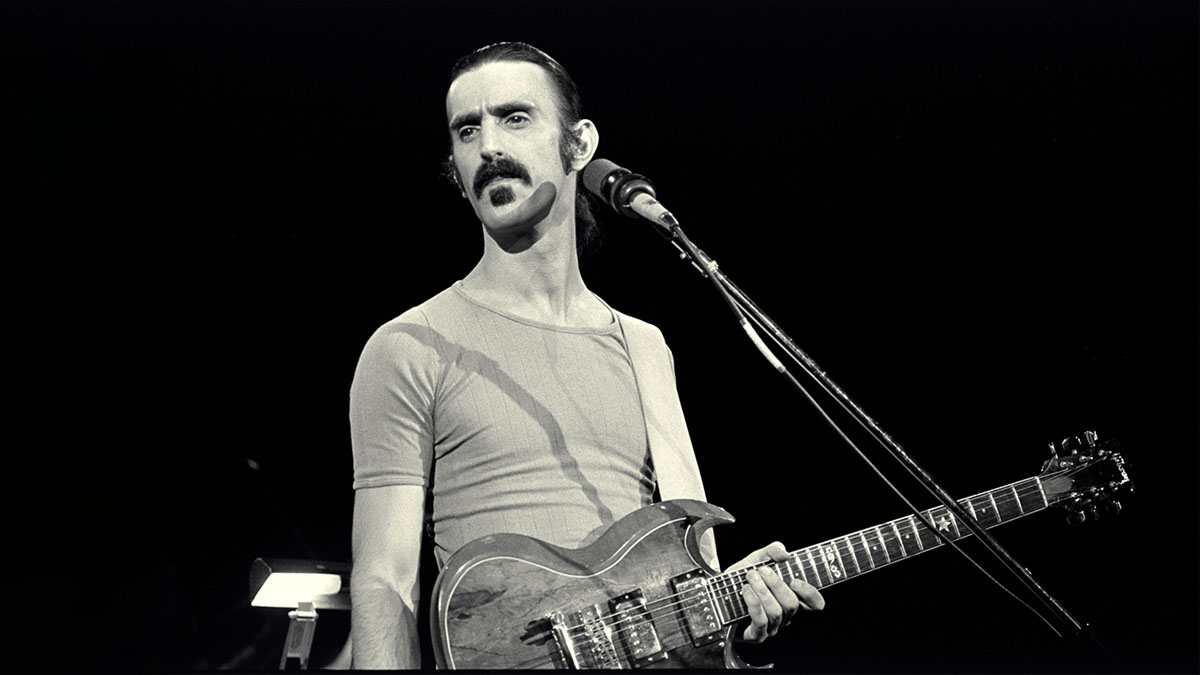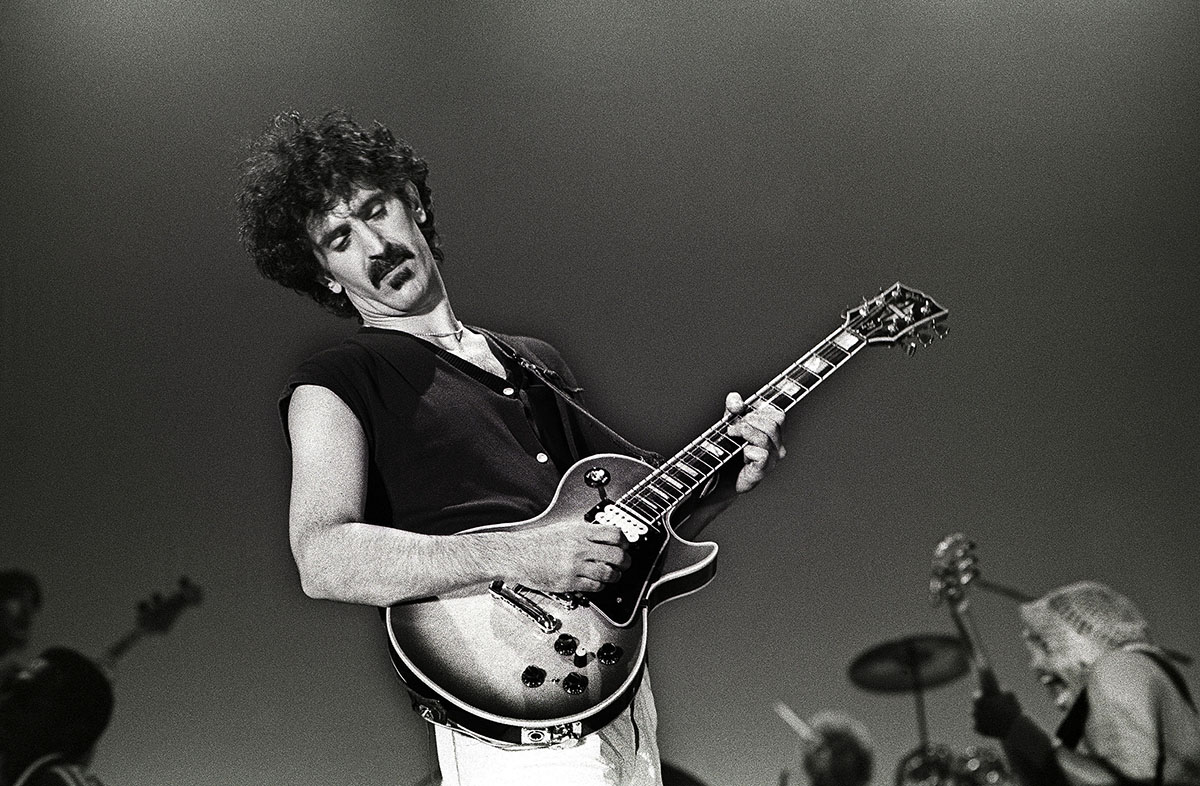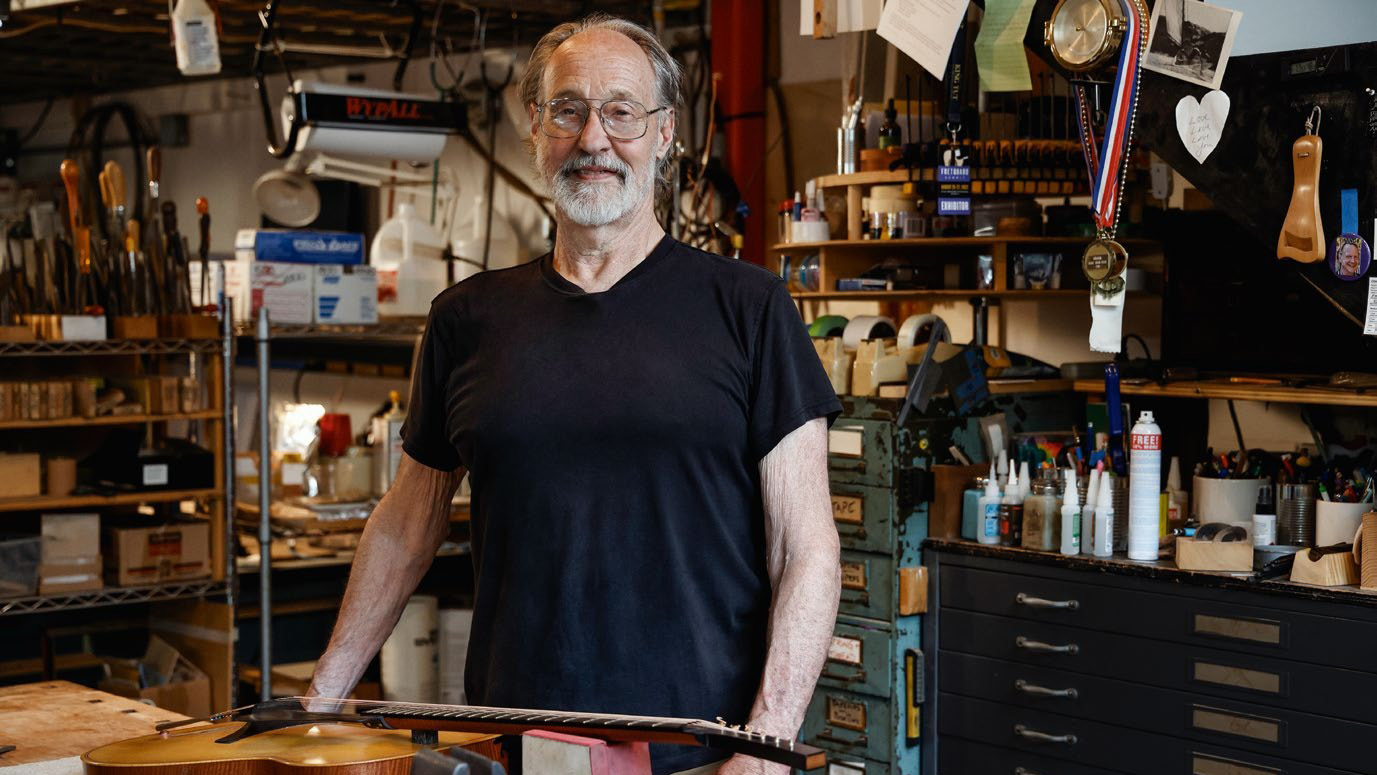Frank Zappa: ”I think my playing is probably more derived from folk music – Middle Eastern music, Indian music, stuff like that”
The guitarist, composer and trailblazer opens up on first guitars, primary influences and the search for better gear in this classic 1993 interview

This extract was taken from an exclusive interview Zappa did with Guitarist in March 1993 and offers some insight into his playing as well as some of the gear that passed through his hands during his spectacularly leftfield career.
Tell us about your first ever guitar.
“It didn’t have a make on it – it had been kinda sandblasted. My brother got it for $1.50 at an auction and it was an archtop, f-hole, ugly motherfucker with the strings about a half-inch off the fingerboard.
“My father had a guitar, which he kept in a closet, but I didn’t really decide to mess around with the thing until we got this godawful thing at the auction. That’s why I liked it, because it was so tinny-sounding. It was just an acoustic guitar, but for an acoustic instrument it was moving closer to the direction of that wiry tone I liked with Johnny ‘Guitar’ Watson, especially if you picked it right next to the bridge.”
When Freak Out! and Absolutely Free [1967] were done, there wasn’t any Hendrix... We'd already made those albums before I even knew that he existed
When did you make the move to electric?
“The guitar my father had was a round-holed guitar of anonymous make and I stuck one of those DeArmond soundhole pickups in that. So it would be one of those bad-sounding magnetic pickups that you stick in the soundhole of a normal acoustic guitar, so it wasn’t a real electric guitar. I guess it was around four or five years later that I actually got an electric guitar. There was a music store not far from my house and I rented this Telecaster for $15 a month. Eventually, I had to give it back because I couldn’t make the payments on it any more.”
How would you sum up your guitar style on the early Mothers recordings?
All the latest guitar news, interviews, lessons, reviews, deals and more, direct to your inbox!
“It was okay, but back then the guitar wasn’t a featured instrument in the way it was on the later albums. As far as a precedent for it, I don’t think there was anything you could compare it to; it was the only way I knew how to do it. There was no reason to do it another way – and, anyway, everybody else was doing it the other way.”
The rock guitar influences that are the most common are the '60s icons, players like Clapton and Hendrix…
“When Freak Out! [1966] and Absolutely Free [1967] were done, there wasn’t any Hendrix. We met Hendrix in the summer of ’67; he sat in with us at the Garrick Theatre, so we’d already made those albums before I even knew that he existed. Actually, I think my playing is probably more derived from the folk music records that I heard – Middle Eastern music, Indian music, stuff like that.”
If you listen to Indian classical music, it’s not just pentatonic. Some of the ragas that they use are very chromatic, all sustained over a root and a 5th that doesn’t change
What specifically?
“For years I had something called Music On The Desert Road [Deben Bhattacharya], which was a recording of all kinds of different ethnic musics from different places in the Middle East. I used to listen to that all the time – I liked that kind of melodic feel. I listened to Indian music, Ravi Shankar and so forth, before we did the Freak Out! album. The idea of creating melody from scratch based on an ostinato or single chord that doesn’t change, that was the world that I felt most comfortable with.
“If you listen to Indian classical music, it’s not just pentatonic. Some of the ragas that they use are very chromatic, all sustained over a root and a 5th that doesn’t change, and by using these chromatic scales they can imply all these other kinds of harmonies. The chords don’t change; it’s just the listener’s aspect that gets to change based on how the melody notes are driven against the ground bass.”
That sounds like a parallel with your own guitar improvisations, where the band plays a fairly straightforward rhythmic vamp and you insert dissonance via the solo – you use a lot of chromatic tones and whole tone scales in your solos.
“Well, you stick them in where you think they belong when you think they belong. Sometimes you guess right, sometimes you guess wrong. The most dangerous thing is improvising with a band and thinking, ‘Okay, now’s the time to play that diminished scale,’ and somebody in the band is thinking, ‘Now’s the time to play a major chord.’ Those kinds of accidents do happen…”
Your guitar style underwent a marked change around the time of Over-Nite Sensation.
“That was partly because of the rhythm section and partly because of the equipment I was using. I imagine that anybody’s guitar playing would change if one day your keyboard player was Don Preston and suddenly the next day it’s George Duke – know what I mean? Or the difference between [drummers] Jimmy Carl Black and Chester Thompson; that certainly made a difference.
"When you have a completely different rhythm section with a different musical perspective, you’d be a fool not to take advantage of it. It also changed because I started playing an SG.”

So, you could put the difference in your guitar sound down, at least in part, to a new instrument?
“Not just a different instrument but also different amplification because prior to that time I’d been playing either a Gold Top Les Paul or a Gibson ES-5 Switchmaster, which was a large, fat three-pickup jazz guitar, which really had uncontrollable feedback.
"I was playing through a Fender amp or an Acoustic amp with a fairly nondescript tone – I just didn’t have enough money to invest in new equipment. But by the early '70s I was playing this SG and I switched over to Marshalls, and started playing through a device that a friend built for me, which had compression, phase shifting and some other little specialities.”
How did you come to own the fire-damaged ex-Jimi Hendrix Strat?
“There was this guy Howard Parker – they called him ‘H’ – who was Hendrix’s roadie, gofer and general assistant. He stayed at our house for a couple of months in the late '60s, and he had this guitar which Hendrix had given to him – I thought it was from the Miami concert. He gave it to me and we had it hanging on the wall as a decoration for years and years and then I met some guys who were capable of putting guitars back together, so I had it done.”
I was playing through a Fender amp or an Acoustic amp with a fairly nondescript tone – I just didn’t have enough money to invest in new equipment. But by the early 70s I was playing this SG and I switched over to Marshalls
Does it have an individual sound?
“Yes, it did have a sound all its own, especially after it was reconstructed, but that sound was not what you would expect from the Hendrix guitar. It didn’t sound like all the Hendrix guitar solos you’ve ever heard.”
It’s had pickup transformations as well, hasn’t it?
“Yeah, it used to have a chrome scratchplate and it had, I think, at that time a Barcus Berry in the neck and also a preamp…”
